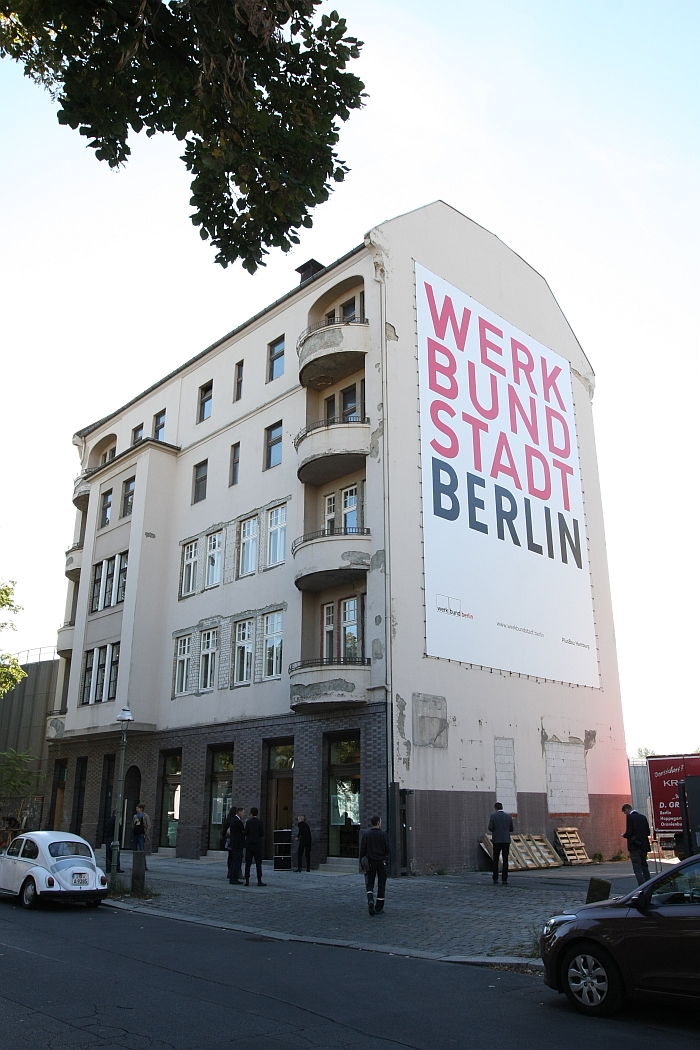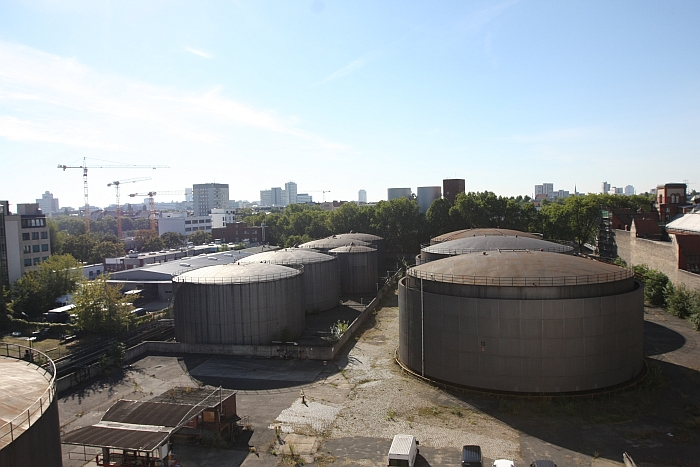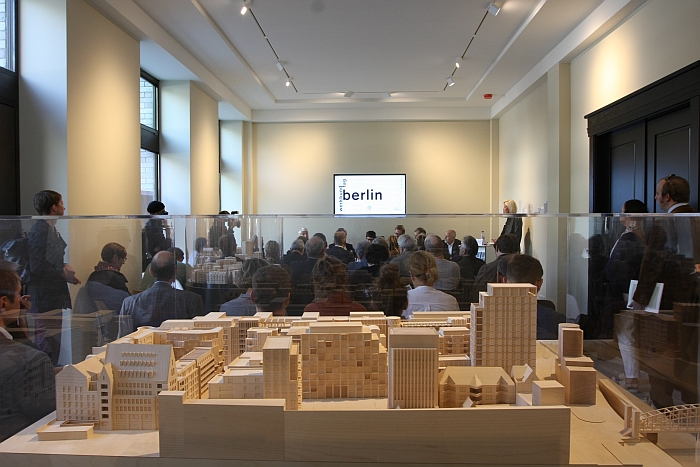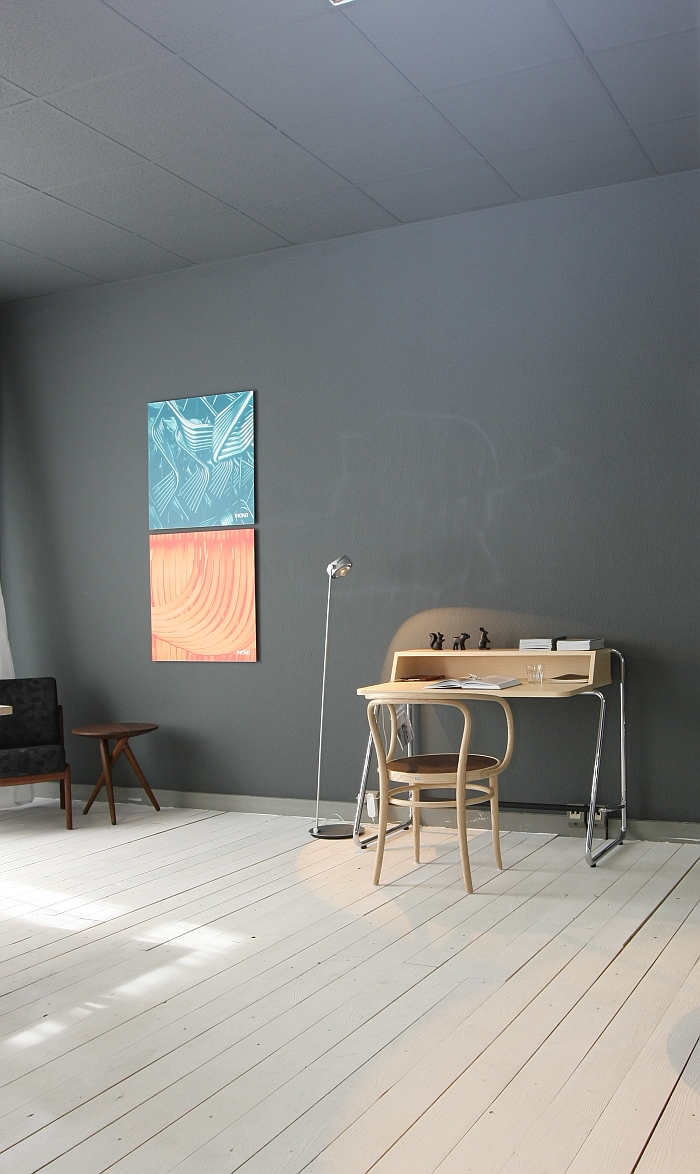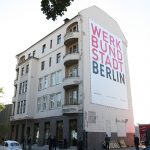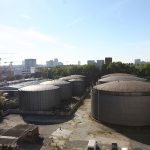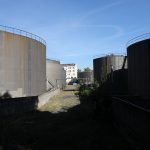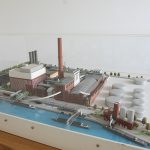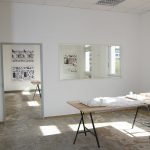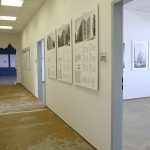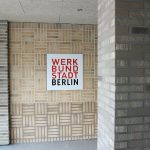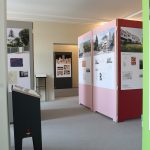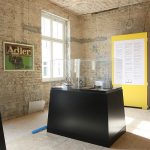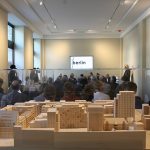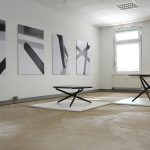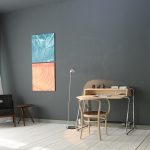WerkBundStadt Berlin
With their WerkBundStadt project the Werkbund Berlin aim to redevelop an industrial site in northern Berlin into a future orientated inner-city quarter. How can be explored in a new exhibition.
Established in 1907 as an amalgamation of designers and manufactures, primarily with the intention of improving the quality of German industrial production – “Made in Germany” being at the end of the 19th century more an insult and synonym for shoddy tat than the quality guarantee it is today – the Deutscher Werkbund has also played a leading role in the development of architecture and urban planning, for all through their numerous “Siedlung” – Estate – projects: the most famous being arguably the 1927 Weissenhofsiedlung in Stuttgart, however during the inter-war years Werkbund Estates were also developed in Brno, Zurich, Prague, Vienna and Breslau, the modern Wrocław.
As much as being about presenting contemporary ideas on domestic furnishings, interiors and ways of living, the Werkbund Estates were also about how we build and how we can best utilise the latest materials, processes, and for all knowledge, to develop the best possible, most durable, housing solutions and thus use architecture and urban planning to help society develop and evolve. Or as Mies van der Rohe wrote in his introduction to the Weissenhofsiedlung catalogue, “The problem of contemporary housing is an intellectual problem and the struggle for contemporary housing is just one part of the greater struggle for new forms for living.”1
With the WerkBundStadt Berlin the Werkbund Berlin aim to continue that tradition.
WerkBundStadt Berlin
Initiated in 2015 the WerkBundStadt Berlin aims to transform a 29,000 sqm oil tank depot on the banks of the River Spree into a new inner-city quarter, with ca. 1,200 flats housing some 2,500 residents, and in that in a way which supports social, demographic and cultural diversity while remaining sensitive to and respectful of the environment.
To this end the Werkbund Berlin brought together 33 European architectural practices and in a series of workshops developed the concept of what they wanted to achieve and how. Each of the architects subsequently developed three projects, one each for three of the estates 39 plots, and at a meeting in July 2016 a final plan for the new estate was conceived. A new estate which features buildings of varying sizes and scales, liberally strewn with open, public spaces an offering a mix of housing and business premises together with a Kindergarten.
And a plan that can be viewed in WerkBundHaus Berlin.
In addition to the presentation of the final proposal for the WerkBundStadt the exhibition in the WerkBundHaus also includes a concise yet informative history of the Werkbund Estates and is very much to be understood as an invitation to discourse as much as an opportunity to view the Werkbund’s proposal.
If you will the architects have had their say, developed their ideas and now all are invited to reflect on what they have proposed, to form their own position and consider in how far the project really is inclusive, sustainable and future orientated.
And that not just the people of Berlin. For as ever with such architectural projects, what is applicable in one location is, if allowing for necessary local adaptations, generally applicable in any comparable location.
WerkStattHaus Berlin
Fulminate as the presentation of the WerkBundStadt is, the one thing that is missing from the exhibition is an exploration of contemporary interiors and furnishings; an omission which means that for us it cannot be considered a Werkbund exhibition in the historical sense.
Or at least not yet.
For under the guidance of Axel Kufus designers such as Barber Osgerby, Mark Braun or Werner Aisslinger have been quietly developing just such proposals; however for organisational reasons they haven’t yet been realised en situ.
Sadly.
Are however planned, and will, we are promised, materialise in the not to distant future …. watch this space as it were.
What is however there, at least temporarily, is the neighbouring WerkStattHaus, a disused office block in which numerous Werkbund member companies are presenting products ranging from furniture and lighting to building materials, door handles and domestic textiles in small, self-designed, showrooms. A presentation format which reminds us greatly of NeoCon Chicago, just in a run down urban Berlin context, and a presentation which includes both companies such as, for example, Horgenglarus or Thonet who featured in many of the inter-war Werkbund Estates, and companies who didn’t even exist back then including Vitra, USM or Occhio.
WerkBundStadt Berlin – A Future Model?
Despite the very obvious passion and conviction with which those responsible are advancing the project – and that fact that potential tenants are already trying to secure properties – it is not yet 100% guaranteed that the WerkBundStadt Berlin will be realised. And if so in its current form.
Having achieved, and now published, a proposal the next step for the Werkbund is to work their way through the complexities of the planning process, and also secure financing and/or partners.
Neither of which are guaranteed.
Yet which, and independent of their ultimate success, are also very important components of the discourse the project has begun.
During the presentation of the proposal it was repeatedly underlined how complex German planning and building law is. But must it? If we are building in contemporary cities with contemporary materials, processes and philosophies and that for future generations, are the old laws still valid? Or does the adherence to a number of basic principles protect us from short sighted tendencies, or worse, self-interested lobbying, and thus ensure the long term viability of such projects?
Similarly who should pay for such urban developments, and under what conditions should the properties be made available, and to whom?
Some thirty percent of the flats in the WerkBundStadt are to be provided at affordable rents. But the rest? Is it correct that such a development only exists if it can guarantee a return for developers through selling private flats. Is that an acceptable way to organise urban development and fund the construction of affordable accommodation? In this case some 380 flats. Or should the state be responsible, if not legally bound, to invest in ensuring there are enough safe, clean homes for its citizens? And do we not in any case need to move away from the idea of the home as a status symbol, far less an investment. Or is such an important identifier that prevents our urban spaces from becoming truly faceless and anonymous, keeps society vibrant and thus supports a positive evolution?
Which in a way is the real value of such a project, it forces us to take up positions, and thus forces us to consider in a much wider sense how we want our urban spaces to develop.
For as we believe we have said before, and don’t believe we will ever tire of saying, we all must accept our individual share in the collective responsibility concerning how our future world is shaped: such decisions are far too important to be left to architects, politicians and designers alone. They present their ideas. We are the control mechanism.
If you’re not in Berlin there is invariably a local project in which you can get involved.
If you are in Berlin, or plan to be this autumn, the exhibition in the WerkBundHaus, Quedlinburger Strasse 11, 10589 Berlin runs until Sunday November 27th.
Full details on both the WerkBundStadt and the WerkBundHaus, including opening times, can be found at http://werkbundhaus.berlin
1. “Amtlicher Katalog der Werkbundausstellung Die Wohnung, Stuttgart 1927” Schriftenreihe Weissenhof Band 2, Stuttgarter Gesellschaft für Kunst und Denkmalpflege, 1998
- WerkBundHaus Berlin
- The proposed site for the WerkBundStadt Berlin
- One day this should be a central axis through the WerkBundStadt Berlin
- The site of the future WerkBundStadt, with neighbouring power station
- Presentation of individual building concepts, WerkStattHaus Berlin
- Presentation of individual building concepts, WerkStattHaus Berlin
- The entrance to the WerkStattHaus Berlin
- Exhibition of the histories of the Werkbund Estates
- Presentation of the history of the Deutscher Werkbund, WerkBundHaus Berlin
- Presentation of the WerkBundStadt proposal
- The ever genial Horgenglarus ess.tee.tisch t 6500 (original Jürg Bally (1954), updated by Daniel Hunziker (2013))
- Home Office a la Thonet, WerkStattHaus Berlin
Tagged with: Berlin, Werkbund Berlin, WerkBundStadt
